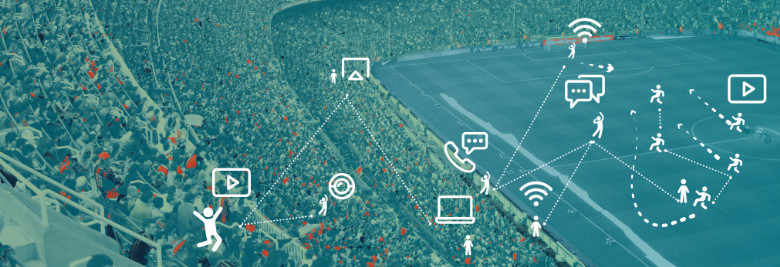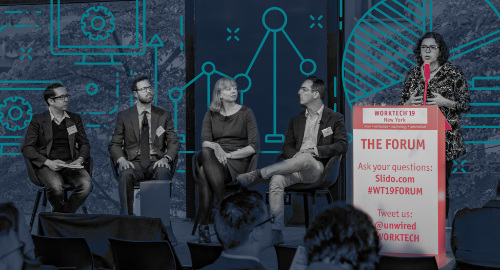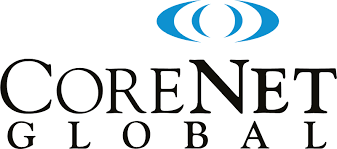Dial M for Mobile

Distributed work is finally real, but is it right for you?
Ah, the sweet song of a 14.4 modem. Those of us who can still recall these dulcet tones remember that the other end of that phone line held limitless possibility. Forward-looking people knew that global connectivity would change the way we lived and worked, and it has. The prospect of learning and working from anywhere was mostly a fantasy then, but now it’s part of our lives—whether we like it or not. In this month’s "On Our Minds…," we take a look at remote work, what employers should consider, and how employees can do it right. Scroll on down, won’t you?
On our minds
Ring, ring! The future of work is calling! Forgive us for sounding a little old fashioned; we’re just remembering the early days of the information age. It was the go-go 90’s, when everything seemed possible thanks to the personal computer, and the best place to learn all about it was from your favorite friends. Tech prognosticators made some pretty funny predictions in their irrational exuberance—we’re still waiting for that ATM that renews our driver’s license! But they also got a lot of things right, like smart watches and biometric identification. Another one they called? Telecommuting.
Since computers became commonly available in the home, our relationship to work has been shifting. For example, employers are allocating far less space per person—as little as 1/2 of former space per person, and approaching 1/5 in coworking environments. Telework, telecommuting, remote working—whatever the term du jour—the idea isn’t new. Yet, even as the number of people working remotely continues to grow, it still presents challenges to both employers and employees.
While it’s pretty obvious how a company can save a bundle on real estate by encouraging people to work elsewhere, it’s not quite so simple as handing employees a laptop and a coffee shop gift card. Companies may end up paying in other ways if remote work doesn’t fit their culture or needs. Some early proponents of flexible work arrangements, like IBM and Yahoo, eventually decided to call their people back into the office because the practice was no longer working for them.
Luckily, we know a thing or two about this—we’ve been in-house, remote, and everything in between—and we’re happy to share what we know about both sides of the remote work relationship.
Be a great remote employer
Workplace policies dealing with flex time are a natural place to start—what kind of workplace experience do you want people to have? What does the business require? Perhaps you might decide that a fully remote workforce won’t work for you, but that’s not the end of the discussion. There is a whole spectrum of options to consider.
Some words to live by: autonomy and trust. In or out of the office, focus on making sure that team members know what their goals are, what their role is on any project, and why they do the work that they do. Armed with these, employees can accelerate their work with choice and control over where when and how to do it. Trust them to make the right decisions and practice managing by objectives rather than line-of-sight. Of course, if you feel you must stay more hands-on, many cloud based file platforms can show which files are being used, when, and by whom.
Next, you need to think about technology. Since the digital domain is now the primary way your people will work together, it’s necessary to think about it more broadly. In a physical office, you wouldn’t ignore accessibility or user experience—does the building have an attractive front door and lobby for visitors? Can a wheelchair get in? Do you have adequate parking? Are you providing opportunities for junior employees to learn from your star team members, or to build the relationships that will help them grow? Each of these things has a virtual corollary that needs to be considered. Over-invest here—that includes both speed of connections and flexibility of tools. Let your remote workers be experimental in figuring out what works for them, and they just might bring back fresh ideas that help your whole team.
Investing in remote work technology and the culture to support it confers another benefit—it’s good for the people who stay in-house, too. The kind of streamlined processes, project management, and communication required for effective remote work help everyone on the team. It’s also hugely beneficial for a space to be populated only by the people who truly need to use it, since that space can then be more responsive to their specific needs rather than trying to be everything to everyone.
Be awesome, even at a distance
The prospect of crushing your todo list without taking off your pajama pants may seem like reason enough to embrace the remote life, but being a great remote worker means thinking more creatively about your work relationships.
First, know that expectations of you might change when you’re no longer in the same room as your boss. The benefit in flexibility of location may require that you are more flexible with your time or some other aspect of your work. The important thing here is to communicate clearly about those expectations. Over-communicate at every level—what you’re working on, what you need help with, and even when you think you've done a great job. Find ways to share your work without making more work for yourself by posting, sharing, and otherwise working in a transparent way.
Make an extra effort on the cultural side of things. When you are remote, you no longer have the benefit of water cooler banter to nurture the relationships and rapport that help you and your colleagues to function as a team. This social fabric must be maintained to succeed long-term.
Have fun with ways to work and be creative about ways to get and stay connected with your office based colleagues. Missing those after-work happy hours? Why not have a beer or glass of wine over Skype or Zoom? Make sure to maintain the same social and out-of-office relationships you would if you were collocated. We know a team who play video games with their remote colleagues, getting together in a virtual arena to battle a common foe (not just the corporate competition ;)
It probably goes without saying that mastering the technology involved is a baseline requirement. Our multisensory guidance, stands for distributed work too. Consider a few test calls to check how sound and lighting from your work environment are experienced from the other end of the line. How is the sound quality on the device you use for conferencing? Are you in an echoey space?
It’s critical to give some thought to mental health. The freedom and flexibility of remote work might seem like a boon to wellness, and most folks won’t miss commuting every day, but there are drawbacks too. There is growing concern that, for all our technological connection, our society is facing an epidemic of loneliness. This is a potential problem both for individual health and the functional health of our organizations.
The process of work-life integration has been a long time in the making, and the smartphone era has accelerated that trend. The best flex work setup offers amazing spaces and policies that fit the diverse needs of people whether or not they come into the office, paired with dedicated people who are creative in making it work. As always, it’s the intersection of what the employee wants to do and what the company wants to do that really matters.
So what?
Thinking of going remote, but not sure it’s right for you? Already practicing telework, but want to be doing it better? Well, we’ve got the 411. Fitting together the many parts that go into distributed working—policy, technology, culture, and management—is kind of our thing.
PLASTARC advocates for setup that fits your way of working in particular. We use a blend of qualitative and quantitative metrics to create robust workplace design recommendations (physical and virtual), then guide clients through the process of implementing change.
Maybe you’re all set for the time being, but know somebody who could benefit from some of our workplace TLC. Please let them know by using that forward button!
From the archives
Speaking of embracing the full range of human needs, a year ago we wrote for Work Design Magazine about encouraging people to bring their full selves to work. If you didn’t read it then, here’s another bite at the apple. If you did, this is a great opportunity to check in with what has changed since last year.
Maybe go back a little further to 2014; our article about location intelligence offers some food for thought. Now that work is more mobile and workers are choosing to move more, a location-aware experience is even more important.
That’s about it for this month. We’d love to hear about your remote work experience. Send us an electronic mail message to tell us all about it, or just to share your favorite old-school links. Just no hamster dance, please.
In Case You Missed It
This month we looked back at the history of New York, and forward to the future of workplaces everywhere. Here’s what we’ve been up to...

Offices are collecting loads of data—how will they use it?
We wrote for Quartz at Work, discussing how the data collected by building technology offers exciting new possibilities—as well as challenges.

WORKTECH NY
PLASTARC celebrated ten years of WORKTECH NY by convening experts to discuss a decade of change in the city, focused on public spaces, tech, and talent.

Big Tech and VC for Architecture?
Friend and former head of research at WeWork, Daniel Davis, writes about the companies working to disrupt the construction industry.

Catalyst Conference
Convene and Honest Buildings assembled thought leaders in real estate to discuss how we shape the fabric of tomorrow’s cities.
Looking Ahead
On the docket this month are some of our annual favorites. Hope to see you there!






